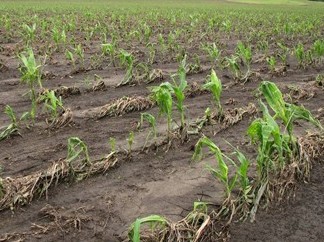 Figure courtesy of jma.go.jp
Figure courtesy of jma.go.jp
In the daily operation of weather forecasts, powerful supercomputers are used to predict the weather by solving mathematical equations that model the atmosphere and oceans. Continue reading
 Figure courtesy of jma.go.jp
Figure courtesy of jma.go.jp
In the daily operation of weather forecasts, powerful supercomputers are used to predict the weather by solving mathematical equations that model the atmosphere and oceans. Continue reading
For the blog today we recommend reading what Kofi Anan wrote for the New York Times this week. Continue reading
 Reliable power system operation requires the continuous balance of supply and demand at every moment in time. However, large-scale integration of variable generations such as solar and wind can significantly alter the dynamics in a grid because wind and solar resources are intermittent. Continue reading
Reliable power system operation requires the continuous balance of supply and demand at every moment in time. However, large-scale integration of variable generations such as solar and wind can significantly alter the dynamics in a grid because wind and solar resources are intermittent. Continue reading

The Climate Corporation plows through huge amounts of data in order to price the crop insurance it sells to farmers. Continue reading

There has been some press coverage of an article that appeared in the October 4, 2013 issue of Science called “Social Factors in Epidemiology” by Chris Bauch and Alison Galvani. The article highlights how social factors and social responses are intertwined in biological systems. Continue reading

The November issue of the AMS Notices has an intriguing article about the use of mathematics to help solve the Middle East Conflict. Continue reading

From October 9 – 13. 2013 many of the AIM staff were volunteering at a golf tournament, the Frys.com open. This is a PGA tour event and is a benefit to many charities including AIM. One of the days was designated AIM day to highlight the activities at AIM and one of the things the tournament directors asked us to do was make up a math+golf related quiz. Continue reading

It is October. Very soon the inspiring canvas of the Fall foliage will be gone and we will raise our eyes once in a while to enjoy an unexplained beauty of the branched architecture of the naked trees. Yet, there might be more than a shear aesthetic pleasure in those views and this is what today’s blog is about. Continue reading

More and more the political wrangling over the government shutdown (and the looming debt ceiling) is described as a game of “Chicken,” Continue reading
Modern society is increasingly dependent on imaging technology. Medical imaging has become a vital part of healthcare, with X-ray tomography, MRI, and ultrasound being used daily for diagnostics and treatment monitoring of various diseases; meteorological radar predicts weather, sonar scanners produce sea-floor maps, and seismometers aid in geophysical exploration. Continue reading

Image courtesy of Stoon/ FreeDigitalPhotos.net
There are two standard ways to restrict harvesting of fish in order to maintain or improve the population. One way is to establish marine protected areas where fishing is prohibited and the other is to allow fishing everywhere but at something less than maximal capacity. Just a few days ago I noticed an interesting preprint in ArXiV that sets up a mathematical framework for deciding whether protected areas should be used and, if so, where they should be established. Continue reading
“This is a day to celebrate that we have a president of the US standing up
for the world in which we live and the future generations that will
inhabit it.” Chris Jones, Director, Mathematics and Climate Research Network Continue reading

Compared with a conventional textbook it’s obvious that an e-text saves energy and reduces greenhouse gas emissions—or is it? Continue reading

I’ve been wondering whether it’s more energy efficient to go out and buy something at a local store or to order it over the internet and have it delivered to my door. Continue reading